In many professional and private applications, we need a precise and appealing representation of date information. Sometimes you may want to spell out only the day, the month, or the year to design reports or documents or to highlight specific dates. In this tutorial, I will show you two effective methods to extract only the desired part from a date and represent it in spelled-out form. This tutorial is aimed at both beginners and advanced users who want to expand their Excel skills.
Key Takeaways
- You can use the function "TEXT" to extract the day, month, or year from a date.
- Alternatively, you can format the cell to display only the desired part of the date.
Step-by-Step Guide
Before we start with the methods, make sure your table is well-formatted.
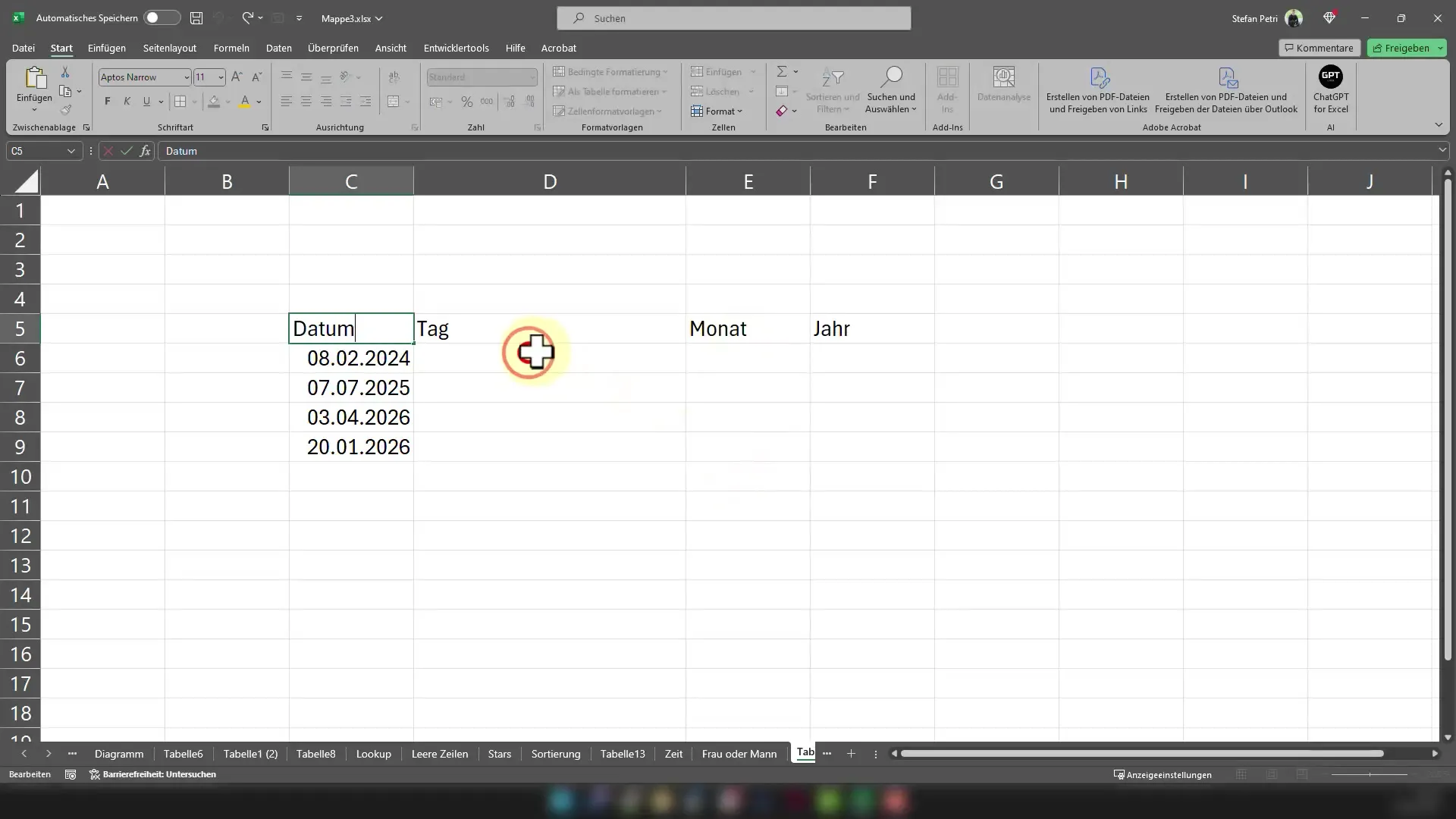
Press the key combination "Ctrl + T" to format the data range as a table. This improves the clarity and user-friendliness of your workbook.
First, I will show you how to extract the day from a date. You can do this with the function "TEXT." Click on a cell where you want to see the result. Enter the formula as follows: =TEXT(Cell; "DD"). Replace "Cell" with the corresponding cell reference where your date is located.
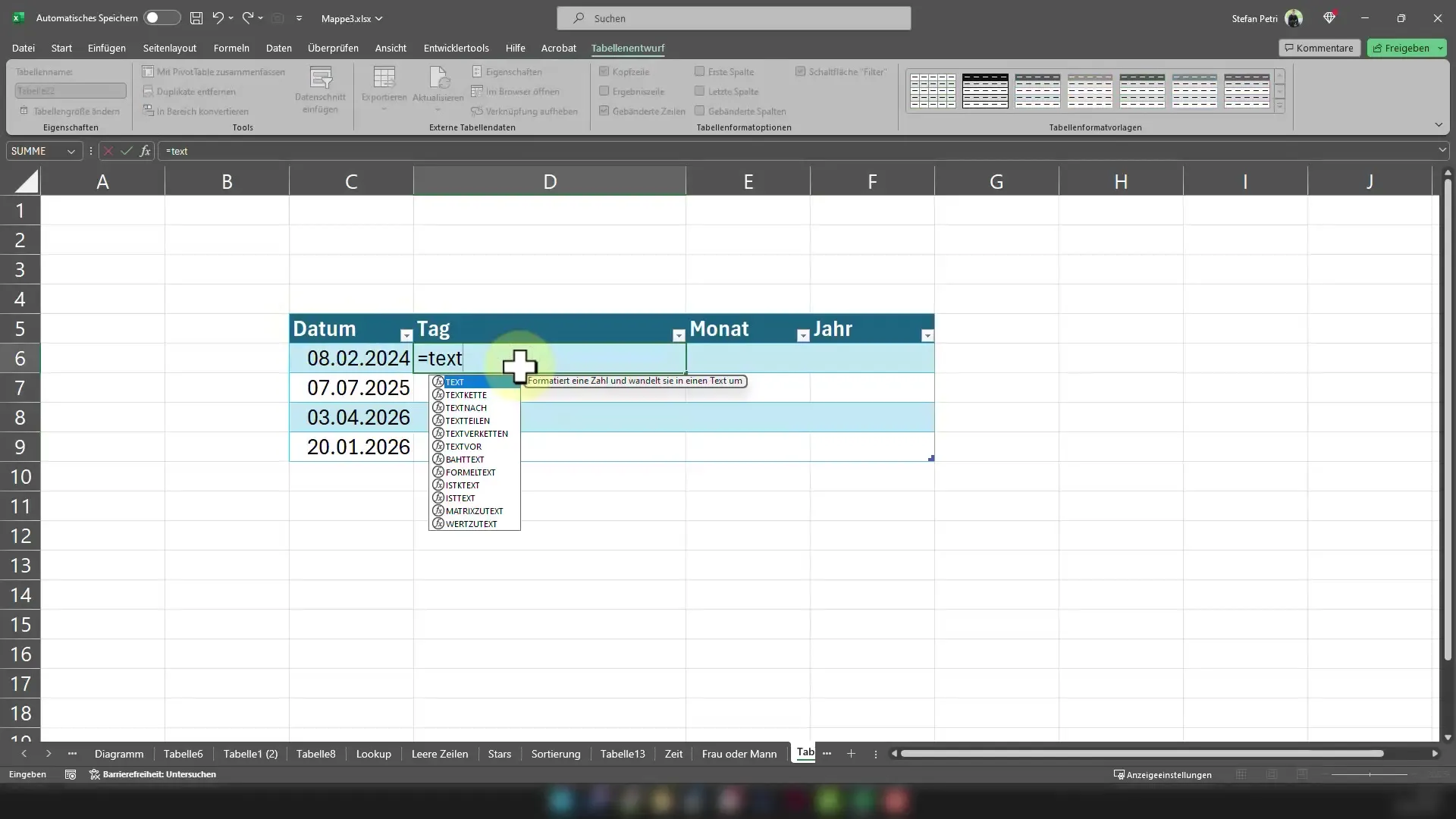
Now you can see that the day is already displayed in spelled-out form. You also have the option to change the format. For example, if you want to display the day only as two digits, you can use =TEXT(Cell; "dd").
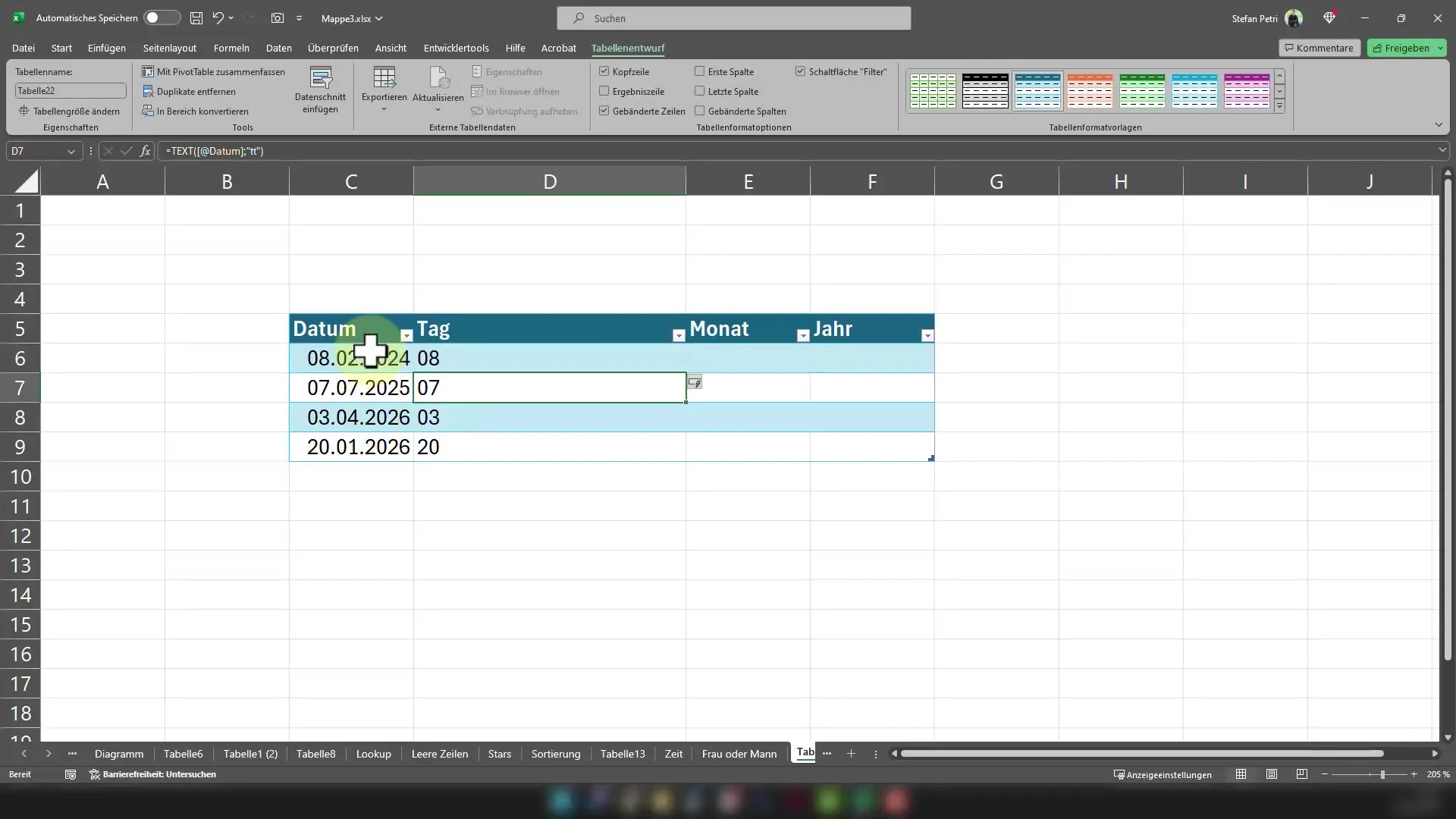
To extract the month, proceed similarly. Use the formula =TEXT(Cell; "MM") to display the month as a number. If you want the month as a spelled-out name, use =TEXT(Cell; "MMMM").
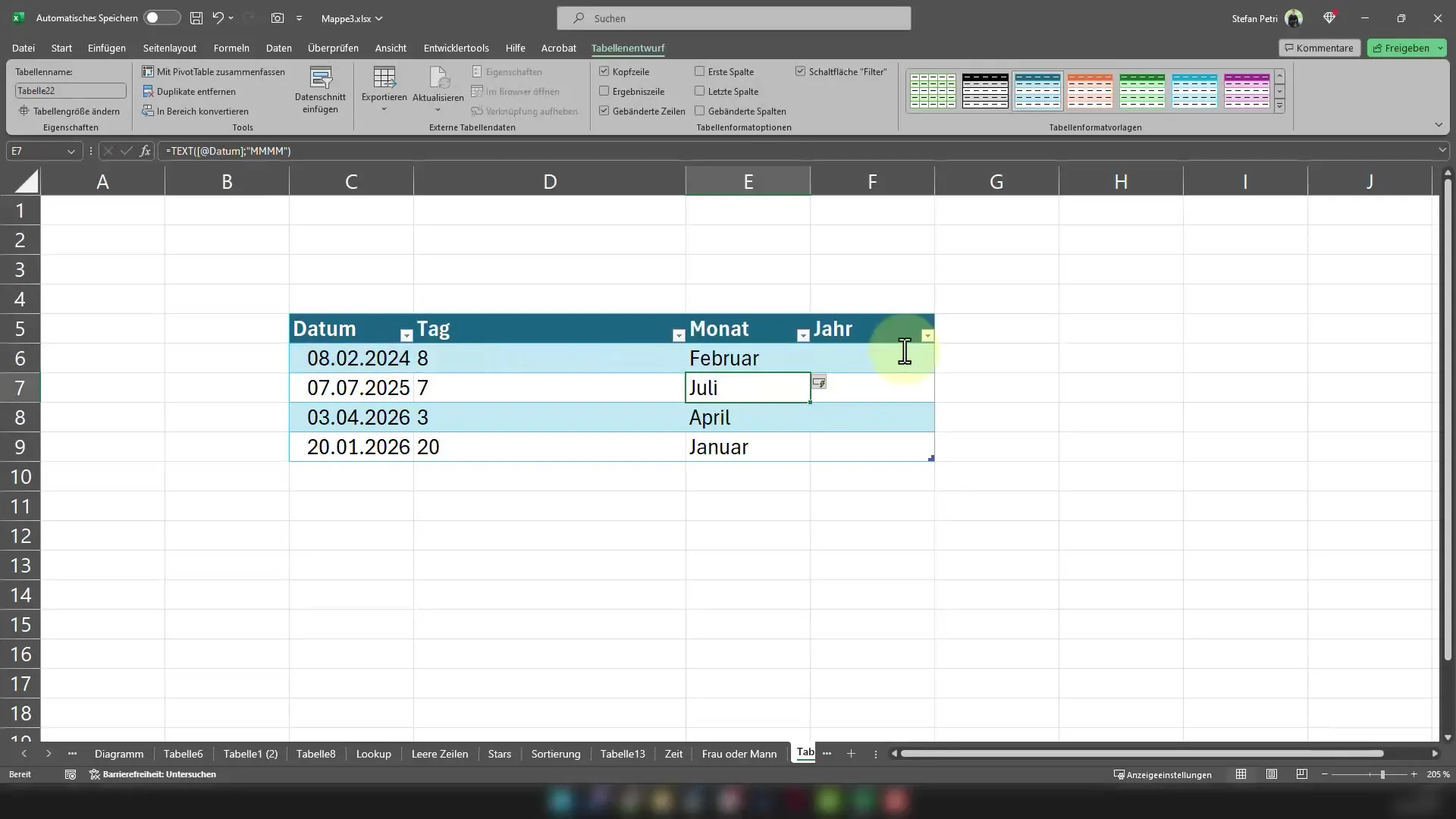
In this step, I will show you how to extract the year. Use the formula =TEXT(Cell; "YYYY") to display the full year. If you only want the last two digits of the year, enter =TEXT(Cell; "YY").
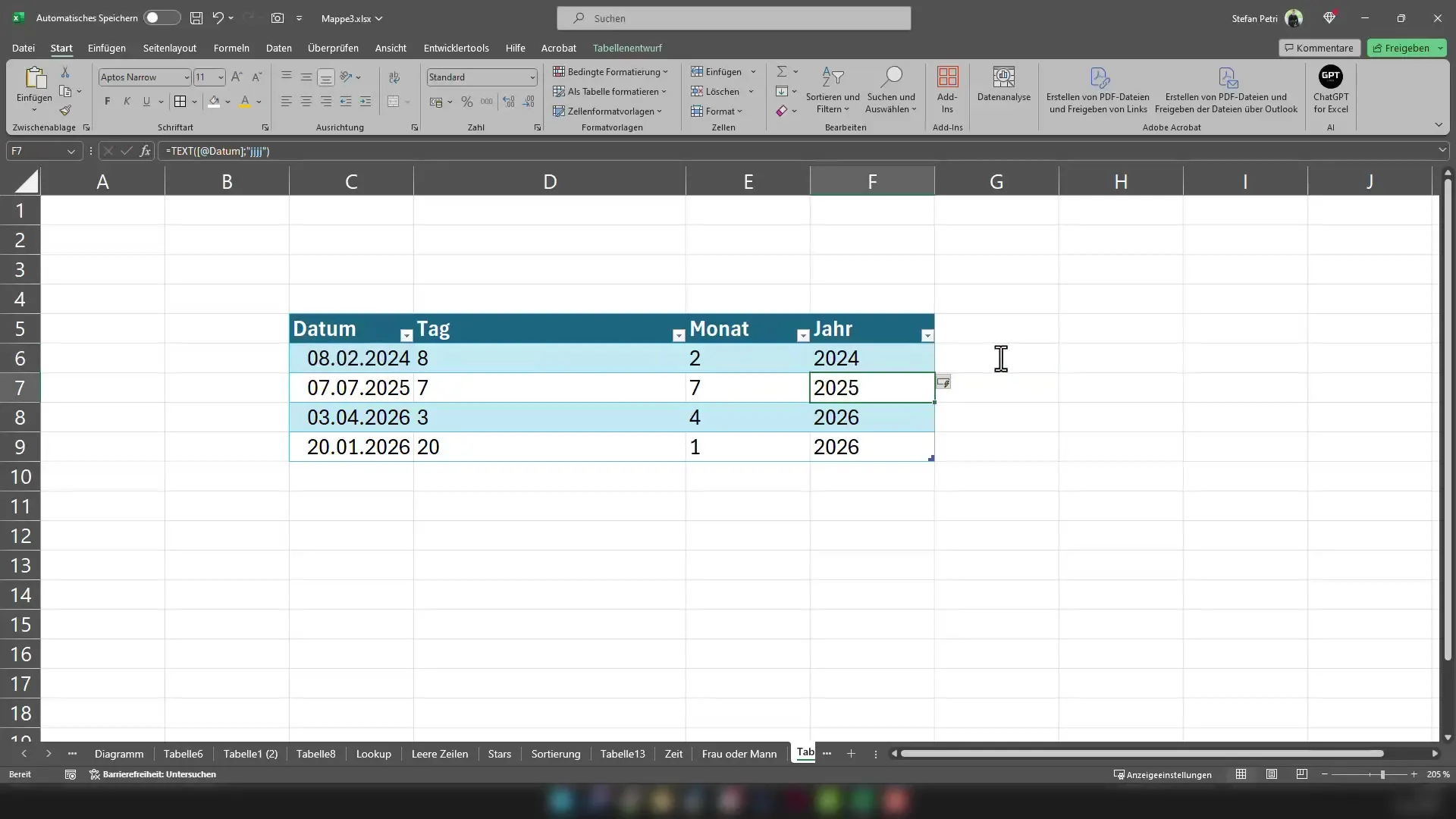
Another approach is to control the date directly through the formatting options of each cell. Right-click on the cell where the date is located and choose "Format Cells" from the context menu.
In the formatting dialog, select the "Custom" category and enter "DD" or "MMMM" into the input field to spell out the day or month. Here you can also specify how you want to customize the date display.
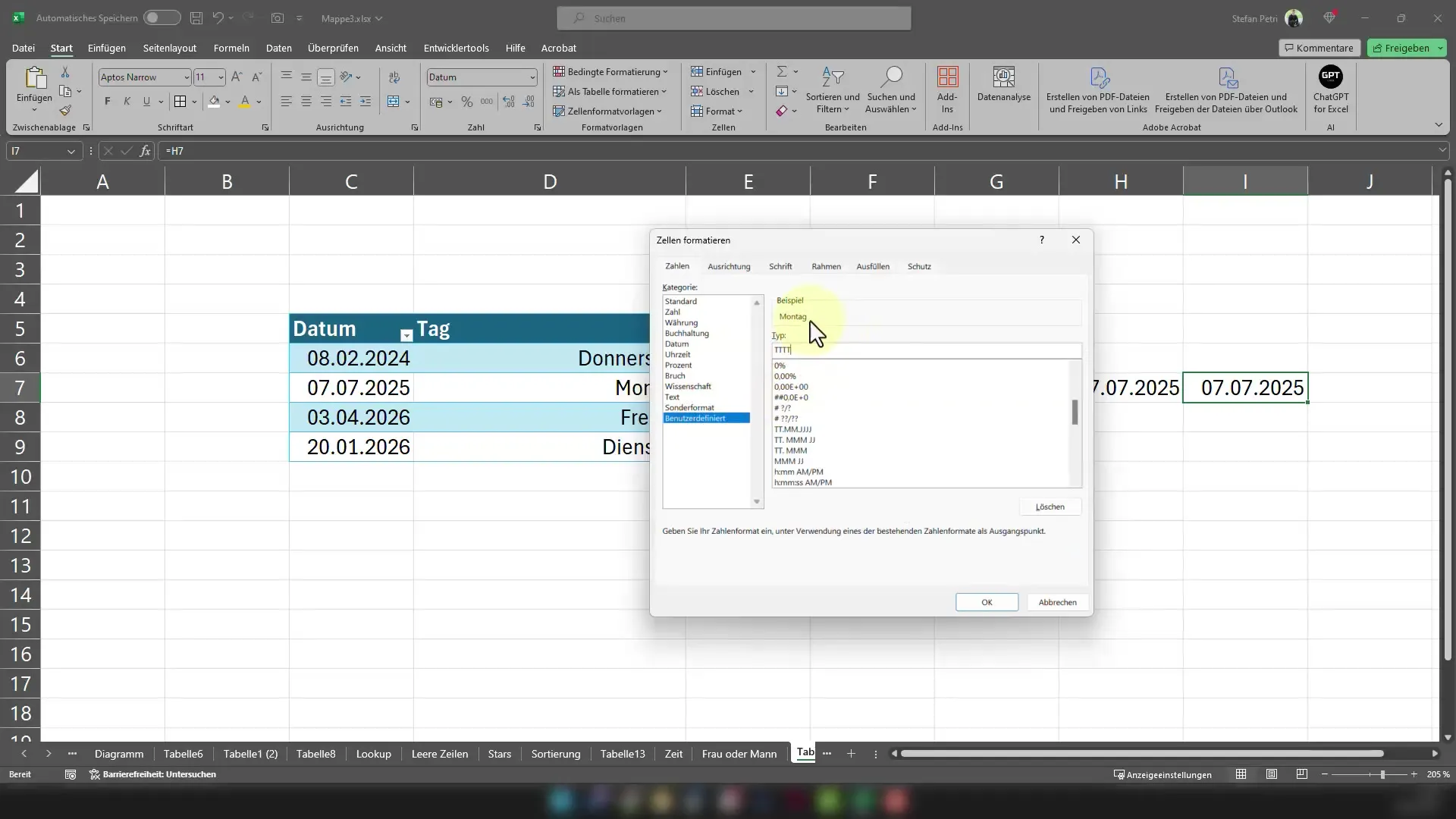
That's it!
Summary
In this guide, you have learned how to extract and spell out the day, month, and year from a date in Excel. By using the "TEXT" function as well as modified cell formatting, you can customize and enhance your data.
Frequently Asked Questions
How can I display only the day of a date in Excel?Use the formula =TEXT(Cell; "DD") in the desired cell.
Can I display the month as a spelled-out name?Yes, use the formula =TEXT(Cell; "MMMM").
How do I show only the last two digits of the year?Use the formula =TEXT(Cell; "YY") for the last two digits of the year.
Do I need to format the cells to apply the functions?No, you can use the functions without additional formatting.
What should I do if I want a specific date format?Click on the formatting menu and choose "Custom" to specify your desired format.


